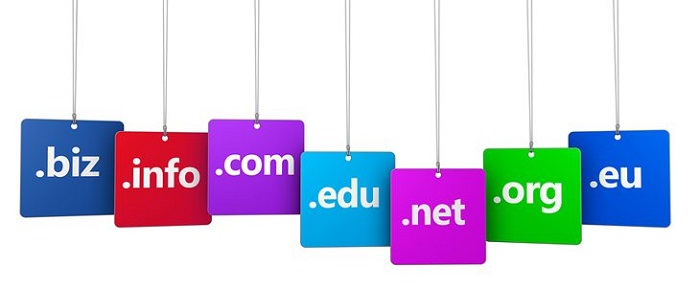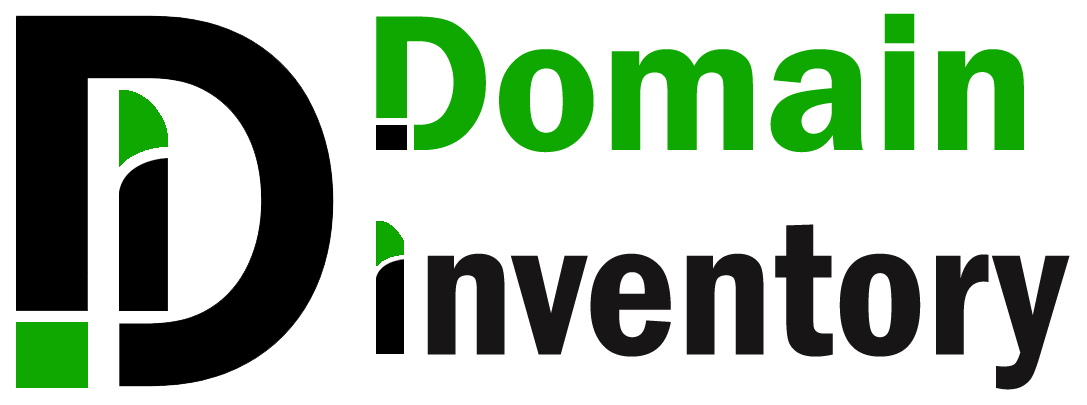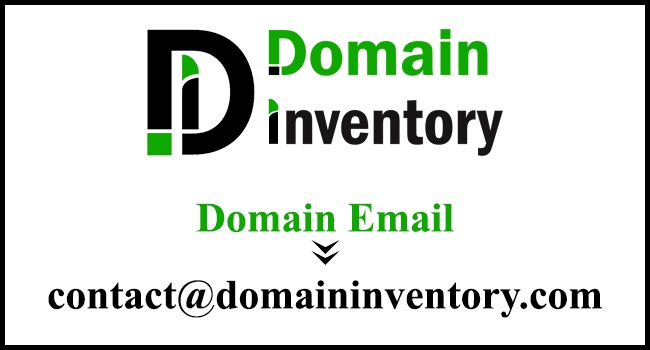If you’re planning to start a website or an online business, one of the first things you need to do is buy a domain name. A domain name is a unique address on the internet that people use to access your website. It’s like your online identity. If you’re new to the world of web development and online business, buying a domain name might seem daunting. However, the process is relatively simple. If you know how to buy a domain name, you can easily establish your online presence and build your brand identity online.
Buying a domain name is a crucial step in establishing your online presence, whether it’s for your personal blog, business website, or online store. By researching, choosing a reputable registrar, and connecting your domain name to your web hosting provider, you can build your website confidently and take your first steps toward online success.
In this guide, we’ll walk you through the steps you need to take to buy a domain name. We’ll cover everything from choosing the right domain name to finding a reputable domain registrar and completing the purchase.
By the end of this guide, you’ll have a solid understanding of how to buy a domain name and be ready to take the first steps toward establishing your online presence. So, let’s get started!
What is a Domain Name?

A domain name is the address of a website on the internet. It is a unique identifier used to locate a website or web application on the World Wide Web. A domain name consists of two parts, a top-level domain (TLD) and a second-level domain (SLD), separated by a dot.
Top-level Domain (TLD)
TLD stands for “top-level domain,” which is part of a domain name that comes after the last dot. It is also known as the domain extension. TLDs are an essential part of the Domain Name System (DNS), which is used to translate human-readable domain names into IP addresses that computers can use to locate websites and other online resources.
There are two main types of TLDs: generic top-level domains (gTLDs) and country code top-level domains (ccTLDs).
gTLDs are TLDs that are not associated with any particular country or region. Examples of gTLDs include .com, .org, .net, .info, .biz, .name, and many others.
ccTLDs are TLDs that are associated with specific countries or regions. Examples of ccTLDs include .uk (United Kingdom), .au (Australia), .ca (Canada), .de (Germany), .jp (Japan), and so on.
In addition to gTLDs and ccTLDs, there are also sponsored top-level domains (sTLDs), which are TLDs that are created for specific communities or organizations. Examples of sTLDs include .edu (for educational institutions), .gov (for government agencies), and .museum (for museums).
The Internet Corporation for Assigned Names and Numbers (ICANN) manages the assignment of TLDs and ensures that the DNS operates smoothly and reliably. ICANN is also responsible for creating new TLDs and overseeing the policies and procedures related to domain name registration and management.
Second-level Domains (SLD)
SLD stands for “second-level domain,” which is the part of a domain name that comes before the TLD. It is also known as the domain name or the domain label. The SLD is the part of the domain name that is most commonly associated with the brand, business, or organization that owns the website.
For example, in the domain name “example.com,” “example” is the SLD, and “.com” is the TLD.
The SLD is an important part of the domain name because it helps identify the website or online resource and provides a recognizable and memorable name for users to access. The SLD can be any combination of letters, numbers, or hyphens and can be up to 63 characters long (although shorter names are generally easier to remember).
When choosing an SLD, selecting a name that is easy to remember, relevant to your business or organization, and unique enough to distinguish you from competitors is important. It is also important to ensure that the chosen SLD is available for registration and does not infringe on any trademarks or copyrights belonging to other businesses or organizations.
Domain names are registered through domain registrars, which are companies that the Internet Corporation authorizes for Assigned Names and Numbers (ICANN) to manage the reservation of domain names and the assignment of IP addresses. Domain registrars charge a fee for domain registration and maintenance, and they also offer additional services like domain privacy protection, domain name system (DNS) management, and email hosting.
Once a domain name is registered, it can be used to host a website or web application, create email addresses, and perform other online activities. Choosing a domain name that is easy to remember, represents your brand or business, and is relevant to your target audience is important.
Top 7 Considerations Before Buying a Domain Name
Before buying a domain name, there are several important considerations you should keep in mind:
1. Purpose
When choosing a domain name, it’s important to consider the purpose of your website. Are you creating a personal blog, an e-commerce site, or a business website? This can help you choose a relevant name that aligns with your website’s goals. For example, if you are creating an e-commerce site to sell pet products, choose a domain name that includes keywords related to pet products or pet care.
2. Branding
Your domain name is an important part of your branding. It should be memorable, easy to pronounce, and brandable. A good domain name can help build brand recognition and recall, so it’s important to choose one that aligns with your brand identity. When choosing a domain name, consider your target audience and what kind of name they would find memorable and appealing.
3. Availability
Before choosing a domain name, checking if it’s available is important. You can use a domain names registrar like GoDaddy or Namecheap. If the domain name you want is unavailable, you may need to get creative and develop alternative options. For example, you could add a word or phrase to the domain name or choose a different domain extension.
4. Domain extension
The most common domain extensions are .com, .org, and .net. However, many other options, such as .io, .co, and .biz, are available. When choosing a domain extension, consider what best aligns with your website’s purpose and branding. For example, .com is a good choice for business websites, while .org is often used for non-profit organizations.
5. Length
Shorter domain names are typically better because they are easier to remember and type. However, if you have a longer domain name that is memorable and brandable, it can still be effective. When choosing a domain name, keep it as short and simple as possible while still conveying your website’s purpose and branding.
6. Trademarks
It’s important to ensure your domain name doesn’t infringe on trademarks. This can cause legal issues down the line, so it’s important to do your due diligence before choosing a name. You can check for existing trademarks using the U.S. Patent and Trademark Office’s Trademark Electronic Search System (TESS).
7. SEO
Your domain name can impact your website’s search engine optimization (SEO). When choosing a domain name, consider including relevant keywords that align with your website’s purpose and branding. This can help your website rank higher in search engine results pages (SERPs) for those keywords. However, it’s important to balance including keywords and maintaining a brandable and memorable domain name.
How to Buy a Domain Name Step By Step Guide

Buying a domain name is a straightforward process that involves a few simple steps. The first step is to decide on an available domain name that suits your business or personal needs. You can use a domain name registrar to check for available names and purchase your preferred one. Some popular registrars include GoDaddy, Namecheap, and Google Domains.
Once you have found an available domain name, you must create an account with the registrar and provide your contact and payment information. You will then be prompted to select the length of your registration, which can range from one to ten years. After completing the registration process and payment, you will be the domain name owner and can start using it for your website or email address. You must renew your domain name before it expires to avoid losing ownership.
Steps To Follow:
Step- 1: Decide on Your Domain Name
Choosing a domain name is a crucial step in building an online presence. Your domain name will be the online identity of your business, so it’s important to choose a name that aligns with your brand and is easy for customers to remember. Consider using a domain name generator tool to come up with ideas or brainstorm your own ideas. Consider the length of the name, how easy it is to spell and pronounce, and whether it’s available on social media platforms.
Step- 2: Check For Availability
Once you have a domain name in mind, check to see if it’s available. This can be done using a domain name registrar, which is a company that manages the registration of domain names. You can search for the availability of your desired domain name on the registrar’s website. If the domain name is already taken, consider alternative options or try to contact the current owner to see if they are willing to sell.
Step- 3: Choose a Registrar
After you’ve found an available domain name, you’ll need to choose a domain name registrar. There are many different domain registrars, each with their own pricing and features. Some factors to consider when choosing a registrar include pricing, customer support, security features, and additional services they offer. Choosing a reputable registrar is important to ensure your domain name is properly registered and secured.
Step- 4: Register Your Domain
Once you’ve chosen a registrar, you’ll need to follow their registration process to purchase your domain name. This typically involves providing your personal information, such as your name, address, and payment details. Some registrars may offer privacy protection services to keep your personal information private. It’s important to carefully review the terms and conditions before submitting your payment to ensure you understand the registration agreement terms.
Step- 5: Set Up Your DNS
After registering your domain name, you’ll need to set up your DNS (Domain Name System) settings. DNS translates your domain name into an IP address, which is required for visitors to access your website. You can set up your DNS through your domain registrar’s website or by contacting their customer support. You may need to provide the nameservers for your web hosting provider to connect your domain name to your website.
Step- 6: Consider Additional Services
Some registrars offer additional services like website builders, email hosting, and SSL certificates. These services can be helpful for your website, but make sure to consider whether they fit within your budget and needs. For example, if you’re starting out, you may not need an SSL certificate or email hosting. However, as your business grows, these services may become more important.
Step- 7: Renew Your Domain
Make sure to renew your domain name before it expires to avoid losing it. Most registrars will send you reminders before your domain name expires, but it’s important to keep track of the renewal date to avoid any issues. Some registrars may offer automatic renewal services, which can be helpful to ensure your domain name is always up to date.
Following these steps, you can purchase a domain name for your website and connect it to your online presence. Remember to take your time and carefully consider each step to ensure your domain name is registered correctly and secured.
How to Buy Existing Domain Name
Buying an existing domain name can be a good option if you’re looking to start a new website or to expand an existing one. Here are the steps to follow to buy an existing domain name:
Determine the Availability
The first step in buying an existing domain name is to determine whether the domain name is available for purchase. This can be done by quickly searching a domain registrar’s website or using a WHOIS lookup tool. If the domain name is available, it means that nobody has registered it yet and you can proceed to purchase it. However, if the domain name is already taken, you’ll need to contact the owner and inquire about the possibility of buying it from them.
Contact the Owner
If the domain name you’re interested in is already registered, you’ll need to contact the current owner to see if they’re willing to sell it. This can be a bit of a challenge, as not all domain owners make their contact information publicly available. You can use a WHOIS lookup tool to find the owner’s email address or phone number, but sometimes the information may be protected by a privacy service. In this case, you may need to use a domain broker to help you negotiate the sale.
When you contact the owner, be professional and courteous. Introduce yourself and explain that you’re interested in buying the domain name. Provide some information about your intentions for the domain, such as the type of website you plan to build or the industry you operate in. This can help the owner understand why you’re interested in the domain and may make them more willing to sell it.
Negotiate a Price
Once you’ve made contact with the owner and expressed your interest in the domain name, it’s time to negotiate a price. This can be a tricky process, as the value of a domain name can vary widely depending on a variety of factors, including the length, popularity, and age of the domain. Some owners may be willing to sell their domain names for a few hundred dollars, while others may demand millions.
To determine a fair price, you’ll need to do some research. Look at recent sales of similar domain names to get an idea of what they’re worth. You can also use online tools such as Estibot or GoDaddy’s Domain Appraisal to get an estimate of the value of a domain. Keep in mind that the owner may have their own ideas about what the domain is worth, so be prepared to negotiate.
Use a Domain Escrow Service
To protect both the buyer and seller, it’s recommended to use a domain escrow service, such as Escrow.com, to handle the transaction. The service will hold the funds until the domain name transfer is complete. This helps to protect both the buyer and the seller from fraud and ensures that the transaction is completed smoothly.
When using a domain escrow service, both the buyer and the seller will need to provide some information, such as their contact details and payment information. The service will then hold the funds until the domain has been transferred to the buyer. Once the transfer is complete, the funds are released to the seller.
Transfer the Domain
After the payment has been made, the domain owner will need to transfer the domain name to the buyer’s account. This involves changing the domain’s ownership details and updating the domain’s nameservers to point to the buyer’s website.
The domain transfer process can vary depending on the domain registrar but typically involves the buyer creating an account with the same registrar as the seller and providing the necessary information to complete the transfer. This can include authorization codes, email addresses, and other details.
It’s important to follow the registrar’s instructions carefully to ensure that the transfer is completed successfully. If you need clarification on any of the steps, feel free to reach out to the registrar’s customer support for assistance.
Renew the domain
Finally, once the domain name has been transferred to the buyer, it’s important to ensure that the domain is renewed annually to prevent it from expiring and potentially being lost to someone else. Most domain registrars offer automatic renewal options, which can be a convenient way to ensure that your domain stays active.
It’s important to remember that domain registration fees are typically charged annually and can vary depending on the domain extension (e.g., .com, .org, .net, etc.). Make sure to keep track of when your domain is set to expire and renew it on time to avoid any disruption to your website or online presence.
In addition to renewing your domain, it’s also a good idea to protect your investment by securing your domain with security features such as two-factor authentication and domain locking. These features can help prevent unauthorized transfers or changes to your domain settings.
Expert Tips to Buy a Domain Name
As more and more businesses and individuals establish their online presence, buying a domain name has become a crucial step in creating a website. A domain name is essentially the address of your website, and it’s important to choose a name that is memorable, relevant, and easy to find. However, with so many options available, it can be overwhelming to know where to start. That’s why in this section, I will provide you with expert tips on how to buy a domain name that will help you establish a solid online presence for your business or personal brand.
- Choose a reputable domain registrar: Look for a reputable domain registrar with a good track record. Some popular domain registrars include GoDaddy, Namecheap, and Domain.com.
- Keep it short and memorable: Choose a domain name that is short and easy to remember. Avoid long, complex domain names that are difficult to spell or remember.
- Use relevant keywords: Use relevant keywords in your domain name that reflects your website’s purpose. This will help with search engine optimization (SEO) and make it easier for people to find your site.
- Choose a relevant domain extension: Consider using a domain extension that is relevant to your business or industry, such as .com, .net, or .org. However, many new and unique domain extensions are also available now, so it’s worth exploring all options.
- Check for trademark infringement: Before finalizing your domain name, ensure it doesn’t infringe on trademarks. You can search for trademarks using the United States Patent and Trademark Office (USPTO) website.
- Register for multiple years: Consider registering your domain name for multiple years. This not only ensures that your domain name is secure, but it can also improve your search engine ranking.
- Protect your personal information: Protect your personal information by using a domain privacy service. This will keep your personal contact information hidden from the public WHOIS database.
- Consider buying a premium domain: If your preferred domain name is already taken, consider buying a premium domain. Premium domains are already registered and may cost more, but they can be worth the investment if they fit your business or brand perfectly.
FAQs
How do I buy a domain name?
To buy a domain name, you need to follow these steps:
- Choose a domain registrar: There are many domain registrars available online, such as GoDaddy, Namecheap, and Google Domains. Choose one that meets your needs and budget.
- Check domain availability: Once you’ve selected a registrar, see if your desired domain name is available. Most registrars have a domain search tool on their website that you can use to check availability.
- Register the domain name: If the domain name is available, follow the registrar’s instructions to complete the registration process. This usually involves providing contact and payment information.
- Set up domain settings: After registering the domain, you’ll need to set up the domain settings. This includes configuring the domain name servers (DNS) and any other settings that are required for your website to function properly.
How much does a domain name cost?
The cost of a domain name varies depending on the registrar and the domain extension. Some domain extensions are more expensive than others, and some registrars may offer discounts or promotions. On average, a domain name can cost between $10 and $50 per year.
How long does it take to buy a domain name?
Buying a domain name can take anywhere from a few minutes to a few days. The process of checking availability and registering the domain can be completed quickly, but it may take some time for the domain name to propagate across the internet and become fully functional.
Can I buy a domain name that someone else owns?
If a domain name is already registered to someone else, you can try to purchase it from them. This is known as a domain name acquisition. However, acquiring a domain name can be a complex and expensive process, especially if the domain name is highly desirable. You may need to negotiate with the current owner or use a domain broker to help you acquire the domain.
What are domain extensions?
Domain extensions are the letters that come after the domain name, such as .com, .net, .org, .gov, and so on. There are two types of domain extensions: generic top-level domains (gTLDs) and country code top-level domains (ccTLDs). Some domain extensions are restricted to certain organizations or individuals, while others are available for anyone to register.
How do I choose a domain name?
Choosing a domain name is an important decision that can impact your website’s success. To choose a domain name, consider the following factors:
- Relevance: Choose a domain name that is relevant to your website’s content and purpose.
- Simplicity: Choose a domain name that is easy to remember and spell.
- Availability: Choose a domain name that is available to register.
- Branding: Consider using your brand name or a variation of it in your domain name.
- SEO: Choose a domain name that includes relevant keywords to help with search engine optimization.
Can I change my domain name?
Yes, you can change your domain name, but it can be a complex process involving changing your website’s URL, domain settings, and more. Changing your domain name can also affect your website’s search engine rankings and traffic. Choosing a domain name you plan to stick with for the long term is best.
Do I own my domain name forever?
When you register a domain name, you own it for a specified period of time, usually between one and ten years. After the registration period expires, you will need to renew your domain registration to continue using the domain name. If you fail to renew your domain registration, your domain name may become available for others to register.
What is domain privacy?
Domain privacy is a service offered by some domain registrars that helps protect your personal information from being publicly available in the WHOIS database. When you register a domain name, your contact information is typically included in the public WHOIS database, making you vulnerable to spam and other unwanted contacts. Domain privacy replaces your personal information with the registrar’s contact information while allowing you to retain domain name ownership.
Final Words
When buying a domain name, choosing a name that’s memorable, easy to spell, and relevant to your brand or business is crucial.
To buy a domain name, brainstorm a list of potential names and check their availability using a domain registrar’s search tool. Once you’ve found an available name, register it with a reputable registrar and consider purchasing additional services like domain privacy protection or SSL certificates.
Remember to keep your domain name registration up-to-date and renew it before it expires to avoid losing your online identity. With these tips in mind, you’ll be able to purchase a domain name and build your online presence confidently.

